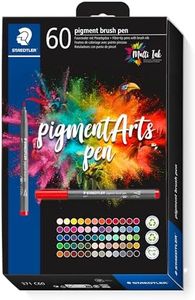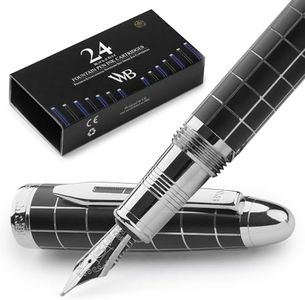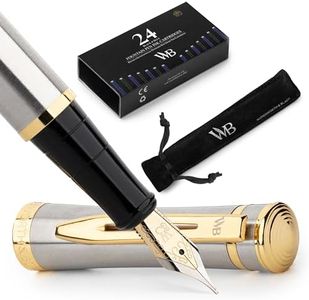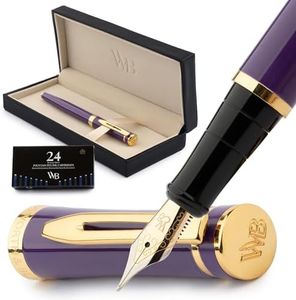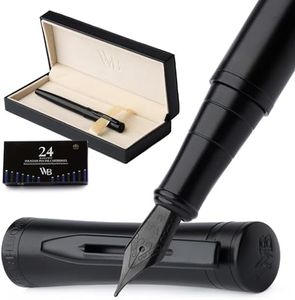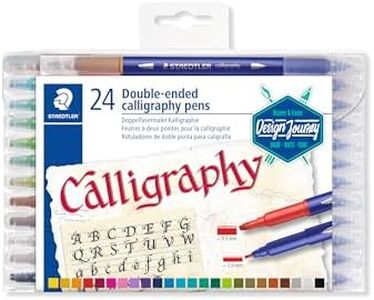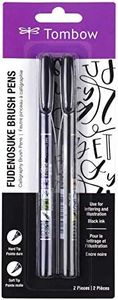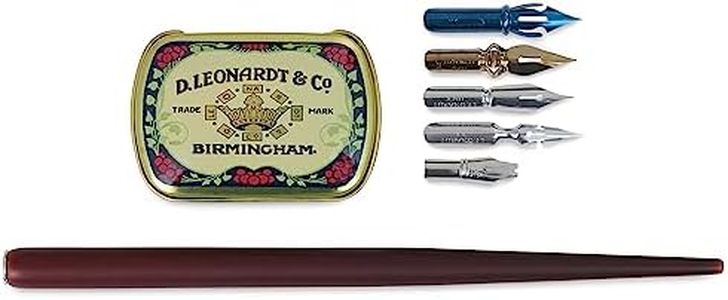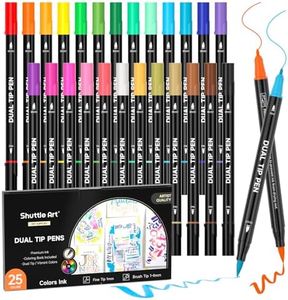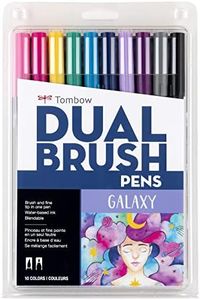We Use CookiesWe use cookies to enhance the security, performance,
functionality and for analytical and promotional activities. By continuing to browse this site you
are agreeing to our privacy policy
10 Best Calligraphy Pens
From leading brands and best sellers available on the web.By clicking on a link to a third party's website, log data is shared with that third party.
Buying Guide for the Best Calligraphy Pens
Choosing the right calligraphy pen can really shape your artistic journey, whether you’re interested in learning new styles, making beautiful cards, or creating decorative pieces. The key to picking a good fit is understanding how different features can affect the writing experience and your results. Instead of simply choosing the most expensive or fanciest-looking pen, consider your comfort, your style preferences, and the type of projects you want to do.Nib TypeThe nib is the part of the pen that actually touches the paper and controls the width and style of the lines you make. Common nib types are pointed (for thin and decorative strokes) and broad/flat (for more traditional calligraphy styles). Pointed nibs can create fine hairlines and bold swells with pressure, making them great for scripts like Copperplate. Broad nibs are typically used for Gothic and Italic styles. Beginners usually find broad nibs easier to handle, while advanced users often choose pointed nibs for more complex scripts. Consider the style you’re most interested in before selecting your nib type.
Nib SizeNib sizes determine how wide your strokes will be. They’re usually classified as extra-fine, fine, medium, broad, or sometimes by millimeter widths. Fine nibs are great for delicate, small lettering, while broad or larger nibs are better for bigger, bolder projects such as banners. If you like doing detailed work or working on greeting cards, a smaller nib size may suit you. If you prefer highly visible, dramatic lettering or signage, a broader nib is preferred.
Pen Type (Fountain, Dip, Brush, Felt-tip)Calligraphy pens come in various types: fountain pens (with refillable ink), dip pens (where you dip the nib in ink), brush pens (soft, flexible tip for varied lines), and felt-tip pens (easy, consistent flow). Dip pens offer the most classic experience and versatility with inks, but require more setup and cleaning. Fountain pens are easier for everyday and less messy. Brush pens are good for expressive modern styles, and felt-tips are easy for beginners and quick projects. If you value tradition and experimentation, try a dip pen; for convenience, look to fountain or felt-tip pens; for artistic variation, try brush pens.
Grip ComfortComfortable grip means your hand won't tire as quickly, especially during long sessions. Grips can be hard, soft, round, or even shaped ergonomically. Some pens have cushioned grips while others are simple plastic or wood. If you plan to write for long periods, or have sensitive hands, prioritize an ergonomic or cushioned grip; if you’re only writing occasionally, this may be less of a concern.
Ink CompatibilitySome calligraphy pens only work with specific types of ink, especially fountain and dip pens. Water-based and pigment inks each behave differently, affecting drying time, color intensity, and blend-ability. Make sure your pen and ink are compatible; for example, never use thick, waterproof ink in a fountain pen as it might clog. If you want to try a wide range of ink styles, dip pens are usually the most flexible.
Ease of Cleaning and MaintenanceSome pens require regular cleaning (especially dip and fountain pens) to prevent clogs and maintain smooth lines, while others (like felt-tip or disposable pens) need almost no maintenance. If you’re someone who enjoys the process and cares about pen longevity, go for pens that can be disassembled and cleaned. If you like straightforward tools, felt-tips or disposable pens may be easier.
